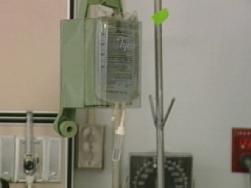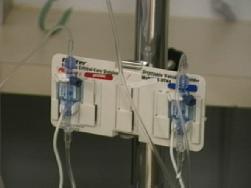|
CENTRAL VENOUS PRESSURE; CVP; RIGHT ATRIAL PRESSURE A Central Venous Pressure, also called a "CVP", is a measurement of the pressure taken from the right side of the heart. It reflects the pressure in the right atrium (the upper chamber on the right side of the heart). It can be measured from one of the lumens (or channels) in a Central Venous Catheter. The pressures in the heart will change as the amount of fluid in the blood vessels changes. A low CVP reading indicates a need for more IV fluid. When we monitor the pressure in the heart and blood pressures at the same time, we can identify trends in the patient's response that help us to understand the best pressure for an individual patient's needs. CVP pressures are measured the same way as pressures in an artery are measured. An infusion is connected to a pressurized box to prevent blood from backing up the catheter. The pressurized box is called a TycosTM. Fluid is infused into the pressurized line at a very slow rate of speed, and a special in-line device called a transducer detects the pressure that is transmitted through the fluid filled tubing. The waveform is then converted to a waveform on the bedside monitor. The principles of pressure monitoring are the same for all pressures measured. All pressures that are measured will produce a waveform and numerical value. These are displayed on the bedside monitor. Although arterial pressure monitoring is displayed continuously, CVP can be measured intermittently. If we do not have enough intravenous sites to manage all of the patients medications, we can use the same lumen to give fluids and intermittently check the CVP. |
Image 1: Chambers of the heart |
|
|
|
|
|
|
|
Image 4: Box used to pressurize infusion fluids (called a "TycosTM"). |
Image 4: Transducer that detects the pressure waveform and converts it to a signal on the monitor. |
|
|
Our masking guidelines have been updated. Visit the Patient and Visitor Masking Guidelines page for more information.





